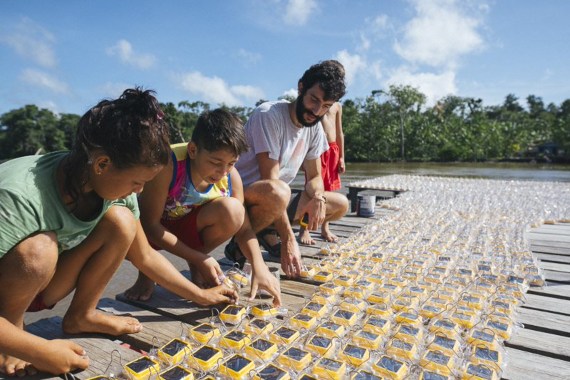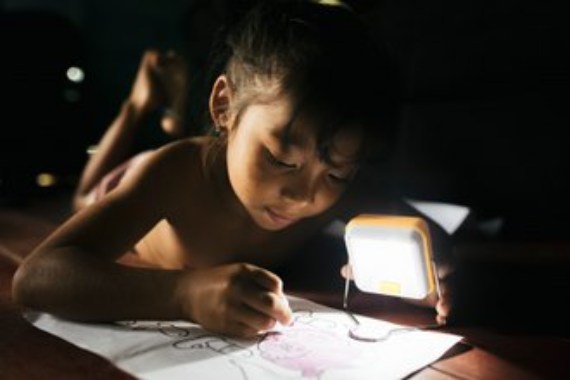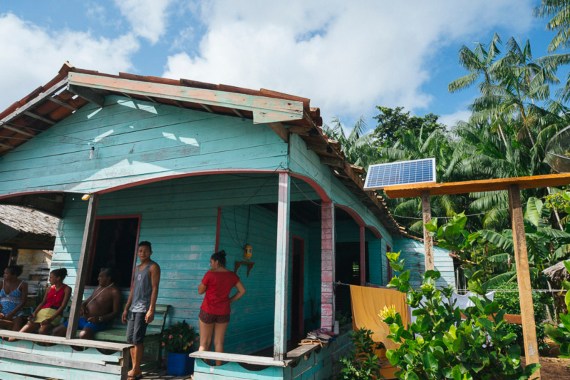Pampa García Molina, science journalist, talks with Eugenio García-Calderón, founder of Lightforhumanity.org, a company that brings light to places where there is none, about the fight against energy poverty.
After working as an engineer for a few years in a wind farm, you went to South America. What did you find there that changed your life and made you change your career path?
Traveling in Latin America I realized just what we have in Spain, such as electricity. In Latin America, some 30 million people live without access to electricity and use kerosene lamps or candles to light their nights. As an energy engineer, this changed my way of looking at the world and I wanted to do my bit and bring light to these places.

Do you believe that energy poverty and climate change, which is also related to this energy poverty, are the main causes of the greatest social inequalities that exist on our planet?
Lack of access to electricity is an impediment for communities to access quality education, good health and even connect with the world and have opportunities to prosper economically. So yes, access to electricity is a cross-cutting factor in terms of the opportunities these communities have to prosper and lift themselves out of poverty.
In Spain there is also energy poverty, but it is not comparable to that of the off-grid regions of the planet. What are the regions with the highest energy poverty in the world?”
Africa is the region most affected by energy poverty, with 900 million people without access to electricity. In countries such as Malawi, 96% of the population has no access to the electricity grid. In Spain there is also energy poverty, but it is different. The wires come to your house; the problem is that you can’t pay the electric bill.
When you founded Lightforhumanity.org your goal was to fight inequalities related to energy access. Your star product at the beginning was the solar lamp, what does it consist of and how does it work?
The solar lamp is very basic and is charged by sunlight. It delivers up to eight hours of light at night. We have managed to distribute thousands of solar lamps in different areas of the Brazilian Amazon. They are able to eliminate the use of candles and kerosene, which represents the first step on the energy access ladder.

After lighting, come solar power systems that are larger and more powerful than the lamp. These systems can charge cell phones, connect refrigerators, computers, and the Internet. The good thing about solar energy is that it is modular and we can adapt the size of the solar panel to the needs of the community or family.”
At lightforhumanity.org you have a funding program, right?
The main obstacle for a family to access solar energy is financing. When someone in Spain buys a solar cube lamp or a solar energy system from us through our website, we are financing a system and giving a loan to a family so that they can pay the cost of this solar solution on a monthly basis and thus avoid the use of kerosene and candles.
In what other ways do you work in local communities to foster social entrepreneurship?
In the countries where we work, such as Colombia, Brazil, and Malawi, we support local entrepreneurs to create companies for the distribution and installation of solar energy systems. And we give these companies the financing they need to provide credit to local families so that they can pay for the cost of these solar energy systems in up to five years, thus eliminating the economic barrier.

In Spain, people can support these local ventures through the SolarCrowd.com platform in a very simple way, by lending directly to these communities.
What other initiatives have you launched so that everyone can enjoy renewable energy?
The challenge in Spain is that more than 70% of the population lives in apartment blocks and do not have enough roof space to install solar panels. We have created what are called remote solar communities, where you can buy one or more solar panels for your home from a photovoltaic plant that may be located 100 kilometers away from your property.
Through a trading company called Comunidad Solar, we are able to bring the energy from your panels that you have purchased to your home at zero cost because you have already paid for them and they are your panels.
And what are your plans for the future?
At Comunidad Solar, we would like people to have the asset of generation. That is, that solar parks, wind farms and hydroelectric plants belong to the people. We want to create a marketplace where you can buy solar panels for your home or a stake in a hydroelectric power plant. In this way, your energy would be at zero cost and you would be encouraging the use and construction of more renewable parks.
With respect to energy access projects in Latin America and Africa, our challenge is to continue to attract new lenders and investors to Solar Crowd. At Solar Crowd dotcom, individuals can lend money and help millions of people who need financing and credit to stop using kerosene.”
Comments on this publication